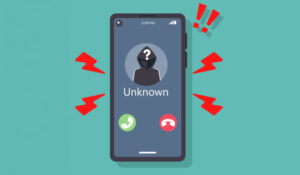Long-winded tone menus frequently top the list of what customers like least about dealing with contact centres. Judith Jackson from ntl:Telewest Business examines how contact centres can manage calls differently.
To ensure that callers have a smooth experience when dealing with a contact centre, there are a few top tips that managers can follow:
1. Get it right the first time – There is nothing worse than dialling a contact centre, wading through menus only to find out that you need to redial or call a different number. The concept of First-Call Resolution (FCR) plays a key role. FCR is about getting the caller through to the right agent or to the right information the first time they call. Studies show that an average of 20 per cent of organisational operational cost is directly linked to failing FCR, which subsequently adds to even higher incoming call volumes.
Ensure that each caller is managed effectively, within their first attempt and if appropriate, within the acceptable Average Handling Times (AHT) set by the contact centre. AHT consists of average hold time, talk time and the after-call work time for an agent. Whilst AHT is one measure, it should not necessarily be the ultimate measure of success as it fails to gauge customer satisfaction.
2. No more than four options – We know that customers loathe long-winded menus. As a rule, never give a customer any more than three or four options per IVR (Interactive Voice Response) menu. Any more might confuse – or annoy.
It is also paramount that one out of the three or four menu options offers the caller a breakout, the choice of going through to a call centre agent. Some customers only want to talk to a human being at the other end of the line while there are those that are happy to use an automated system to access information. As an industry, we must ensure that both types of customers are well catered for.
3. Everyone’s an individual – Not all customers have the same requirements, so should not have to go through the same menus every time. Put yourself in the caller’s shoes: if someone has already booked a holiday and is calling to add travel insurance, do not force them to go through menus offering new holidays. Neither should a frequent business flyer to North America calling the airline be forced to go through menus that offer holidays to Asia or Europe.
Modern call-routing technology can identify callers by their caller-ID or history linked to a CRM (Customer Relationship Management) system to direct them to the most appropriate agent. Contact centres have the technology to identify key customers and fast track callers to dedicated agents. It sounds clichéd, but customers need to be treated as individuals.
4. Route calls to local centres – Sometimes it’s best to do business close to home. For organisations with customers spread nationwide, calls can be routed intelligently so they are connected to the local regional call centre for a more personalised response. On the other hand, intelligent routing means that calls could also be diverted to different parts of the country if a contact centre is overwhelmed with phone calls or is faced with problems answering calls. A good example of this is heavy snowfall when staff struggle to get to work. Managers could simply direct calls on to other sites, so callers face minimum disruption without even noticing the switch-over. In addition, today’s technology allows agents to work flexibly from any location at any time as circumstances demand. In a matter of a few clicks, a mix of home- and office-based agents can be used to handle calls instantly.
5. No call should go missing – At times of peak demand, avoid dropping calls by using network queuing. It is important to use ‘comfort messages’ to update callers on the status of the call so they know that they will reach an agent before long. For example, messages with an automatic countdown such as “you are now caller number 3” gives the caller the confidence that the contact centre has their call logged and it will be answered shortly.
By measuring FCR and having in place the appropriately designed call handling plans aligned to customer contact strategy, contact centres can drive down unnecessary occupancy on the network.
At a time where customer experience and service can be a key source of differentiation, time spent up front putting yourself in the shoes of your caller is time well spent. Put your system to the test; were you happy with how your call was treated?

Judith Jackson is Product Manager, Inbound Solutions at ntl: Telewest Business
Author: Jo Robinson
Published On: 8th Apr 2009 - Last modified: 31st Oct 2017
Read more about - Hints and Tips, Call Routing, First Contact Resolution (FCR)






































Thanks for a useful article Judith.
In our latest benchmarking survey we saw that the average time customers spend in call routing is 35 seconds now, resulting in 14% lost calls (up from 9% in 2007). And even worse in self service solutions; 20% of callers hang up before finishing (14% in 2007). Time to try and stop the trend.
Best regards
Mats Rennstam, Bright
Your advice “no more than four options” only applies to tree-formed IVR dialogues. I don’t know how to argue that this advice is an artifact of yesterday’s IVR technologies without plugging our SmartAction Conversational IVR System.